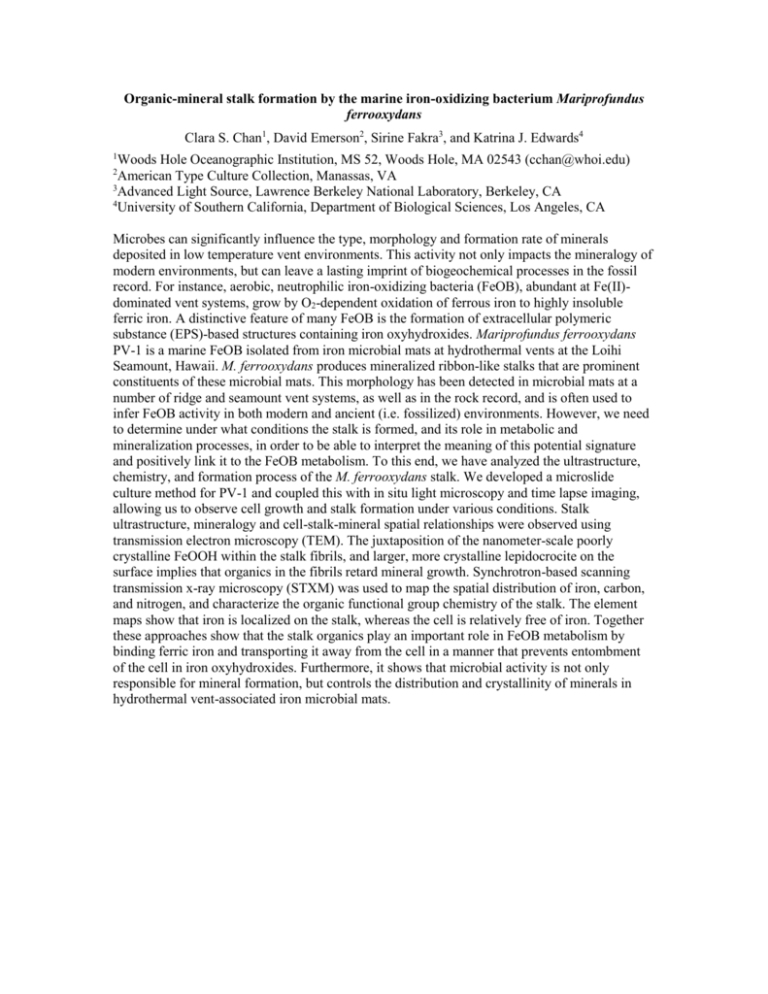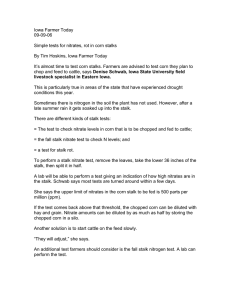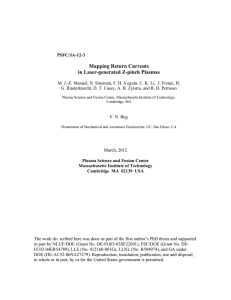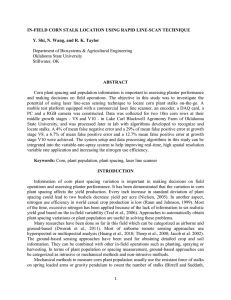abstract - WHOI - Woods Hole Oceanographic Institution
advertisement

Organic-mineral stalk formation by the marine iron-oxidizing bacterium Mariprofundus ferrooxydans Clara S. Chan1, David Emerson2, Sirine Fakra3, and Katrina J. Edwards4 1 Woods Hole Oceanographic Institution, MS 52, Woods Hole, MA 02543 (cchan@whoi.edu) American Type Culture Collection, Manassas, VA 3 Advanced Light Source, Lawrence Berkeley National Laboratory, Berkeley, CA 4 University of Southern California, Department of Biological Sciences, Los Angeles, CA 2 Microbes can significantly influence the type, morphology and formation rate of minerals deposited in low temperature vent environments. This activity not only impacts the mineralogy of modern environments, but can leave a lasting imprint of biogeochemical processes in the fossil record. For instance, aerobic, neutrophilic iron-oxidizing bacteria (FeOB), abundant at Fe(II)dominated vent systems, grow by O2-dependent oxidation of ferrous iron to highly insoluble ferric iron. A distinctive feature of many FeOB is the formation of extracellular polymeric substance (EPS)-based structures containing iron oxyhydroxides. Mariprofundus ferrooxydans PV-1 is a marine FeOB isolated from iron microbial mats at hydrothermal vents at the Loihi Seamount, Hawaii. M. ferrooxydans produces mineralized ribbon-like stalks that are prominent constituents of these microbial mats. This morphology has been detected in microbial mats at a number of ridge and seamount vent systems, as well as in the rock record, and is often used to infer FeOB activity in both modern and ancient (i.e. fossilized) environments. However, we need to determine under what conditions the stalk is formed, and its role in metabolic and mineralization processes, in order to be able to interpret the meaning of this potential signature and positively link it to the FeOB metabolism. To this end, we have analyzed the ultrastructure, chemistry, and formation process of the M. ferrooxydans stalk. We developed a microslide culture method for PV-1 and coupled this with in situ light microscopy and time lapse imaging, allowing us to observe cell growth and stalk formation under various conditions. Stalk ultrastructure, mineralogy and cell-stalk-mineral spatial relationships were observed using transmission electron microscopy (TEM). The juxtaposition of the nanometer-scale poorly crystalline FeOOH within the stalk fibrils, and larger, more crystalline lepidocrocite on the surface implies that organics in the fibrils retard mineral growth. Synchrotron-based scanning transmission x-ray microscopy (STXM) was used to map the spatial distribution of iron, carbon, and nitrogen, and characterize the organic functional group chemistry of the stalk. The element maps show that iron is localized on the stalk, whereas the cell is relatively free of iron. Together these approaches show that the stalk organics play an important role in FeOB metabolism by binding ferric iron and transporting it away from the cell in a manner that prevents entombment of the cell in iron oxyhydroxides. Furthermore, it shows that microbial activity is not only responsible for mineral formation, but controls the distribution and crystallinity of minerals in hydrothermal vent-associated iron microbial mats.











